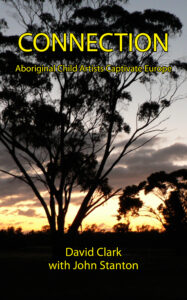At its heart, the story of Carrolup is about the innate emotional needs of human beings, like feeling a sense of belonging. What happens if these needs are not satisfied? And what can happen if satisfaction of these needs is restored?
In our forthcoming book Connection: Aboriginal Child Artists Captivate Europe, I have written two appendices, one reflecting on The Trauma and the other on The Healing. These appendices provide important insights into the themes described above. Here is a section of the first Appendix, The Trauma: Reflections.
‘2. The impact of removing children from their families
The 1905 Aborigines Act of Western Australia made a white Chief Protector the legal guardian of every Aboriginal and so-called ‘half-caste’ child until the child reached sixteen years of age. Within ten years, the State was routinely removing Aboriginal children from their families. This policy of child removals was adopted throughout Australia. It played a pivotal role in creating more trauma amongst Aboriginal people. Many children never saw their parents again; many parents spent years looking for their children.
The story of the Aboriginal children taken from their families, The Stolen Generations, has been extensively documented in Bringing them home: ‘The Stolen Children’ report (1997). The Bringing them home educational video is very informative and deeply moving.
In the 1940s, little was known about trauma and the impact of removing children from their parents. Today, we know much more. I’ve written a number of blogs for The Carrolup Story about these issues, some of which I will refer to here. I’ll start by turning to Bruce Perry, a world leading expert in childhood trauma. The Boy Who Was Raised as a Dog: And Other Stories from a Child Psychiatrist’s Notebook – What Traumatized Children Can Teach Us About Loss, Love, and Healing, written by Bruce Perry and Maia Szalavitz, is an essential read for anyone interested in the trauma field.
In one of my blogs on The Carrolup Story, I use Bruce’s words (and one of his short films) to describe six core strengths that are building blocks in a child’s development—Attachment (Making Relationships), Self-Regulation (Containing Impulses), Affiliation (Being Part of a Group), Attunement (Being Aware of Others), Tolerance (Accepting Differences), and Respect (Finding Value in Differences). Here is what Bruce says about the first of these core strengths, taken from The Child Trauma Academy Training Series 2:
‘ATTACHMENT: Making Relationships
What it is: The capacity to form and maintain healthy emotional bonds with another person. It is first acquired in infancy, as a child interacts with a loving, responsive and attentive caregiver.
Why it’s important: This core strength is the cornerstone of all the others. An infant’s interactions with the primary caregiver create his or her first relationship. Healthy attachments allow a child to love, to become a good friend, and to have a positive model for future relationships. As a child grows, other consistent and nurturing adults such as teachers, family friends, and relatives will shape his or her ability for attachment. The attached child will be a better friend, student, and classmate, which promotes all kinds of learning.
Signs of struggle: A child who has difficulty with this strength has a hard time making friends and trusting adults. She may show little empathy for others and may act in what seems to be remorseless ways. With few friends and disconnected from his peers, he is also at greater risk when exposed to violence. Children unable to attach lack the emotional anchors needed to buffer the violence they see. They may self-isolate, act out, reject a peer’s friendly overture because they distrust it, or socially withdraw.’
Being removed from one’s primary carer(s) at an early age can have a marked impact on a child’s ability to form healthy relationships later in life. Such a removal can also impair a child’s ability to self-regulate, to contain impulses, which can result in later problems sustaining friendships, and in learning to control their behaviour.
Elsewhere in his book, Bruce Perry states:
‘Trauma and our responses to it cannot be understood outside the context of human relationships…. The most traumatic aspects of all disasters involve the shattering of human connections. And this is especially true for children. Being harmed by the people who are supposed to love you, being abandoned by them, being robbed of the one-to-one relationships that allow you to feel safe and valued and to become humane—they are profoundly destructive experiences. Because humans are inescapably social beings, the worst catastrophes that can befall us inevitably involve relational loss.’ Bruce D. Perry, M.D., Ph.D. and Maia Szalavitz, The Boy Who Was Raised as a Dog: And Other Stories from a Childhood Psychiatrist’s Notebook – What Traumatized Children Can Teach Us About Loss, Love and Healing, p. 231′
The above section is from David Clark, with John Stanton, Connection: Aboriginal Child Artists Captivate Europe, 23rd June 2020. ©David Clark



